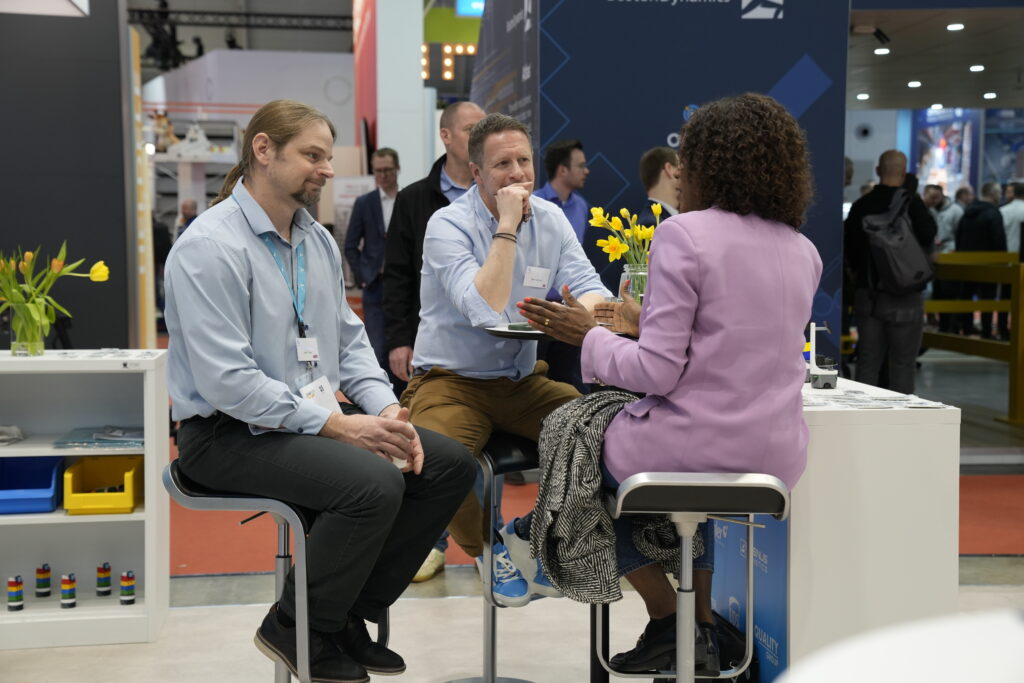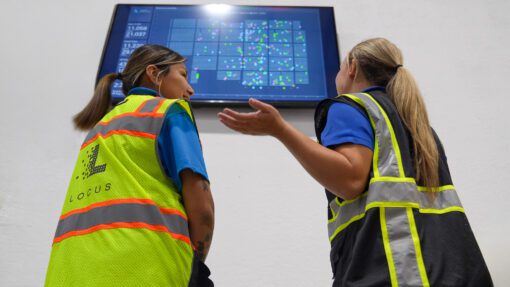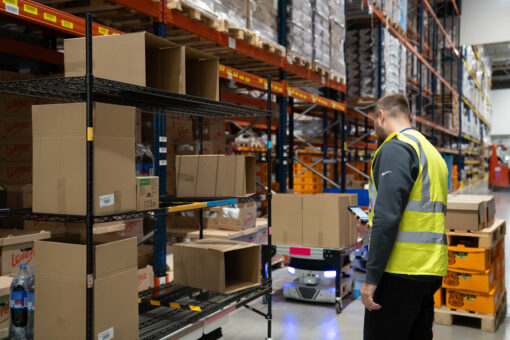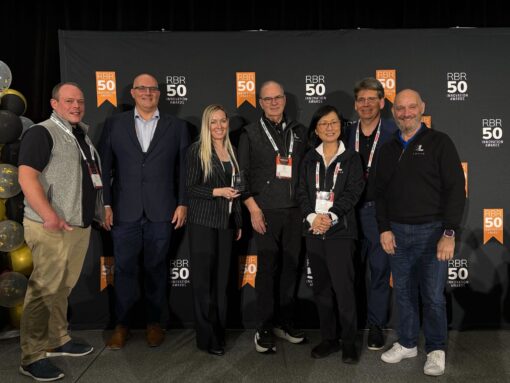WP: How to achieve 400 UPH with Locus Fast Pick
WP: How to achieve 400 UPH with Locus Fast Pick Download Now!
Outpace the Limits of G2P with R2G
Jason Gies, Sr. Vice President, Strategic Accounts

In warehouse automation, three acronyms often carry a lot of weight: P2G, G2P, and R2G. While only three letters are involved, the differences between them define how modern fulfillment operates.
P2G (Person-to-Goods) has long been Locus Robotics’ hallmark, with Locus Origin and Locus Vector enabling humans and robots to work side by side in the aisles. G2P (Goods-to-Person) is familiar to warehouses in the form of automated storage and retrieval systems (ASRS), where products are delivered to centralized stations for human picking.
With the introduction of Locus Array, we’ve now established a third model: R2G (Robot-to-Goods). Unlike P2G or G2P, R2G is designed as a zero-touch fulfillment system, with Locus Array autonomously traveling to storage locations, selecting items, and staging orders in the aisle for pack out. It combines the strengths of P2G and G2P in throughput, flexibility, and density, while eliminating many of the constraints of G2P.
The Core Difference with R2G vs G2P: Where Automation Meets the Product
In G2P, an order triggers automation in the form of a gaylord or racking to transport bins one at a time to pick stations, where humans select items and quantities. Orders are then packed at the station or downstream.
R2G works differently. With Locus Array, orders are assigned directly to a robot, which:
- Travels to product locations
- Pulls the correct storage tote
- Autonomously selects the items and quantities
- Transfers picks into assigned order totes
From induction to picking to pack out, the process is automated. Humans remain essential for packing, shipping, and exceptions, but not for aisle picking.
The impact is profound when items stay available in storage instead of being tied up in transit, order staging happens directly in the aisle, and fulfillment flows continuously without bottlenecks.
The Limitations of G2P
G2P works well when demand is predictable, profiles are stable, and you know the volume ahead of time. But very few operations today can assume steady profiles without variation and G2P has structural limits:
- Closed-loop design: Scaling up requires more pick stations and robots with each expansion locking in as a new baseline.
- High upfront investment: Storage cube and throughput capacity must be designed for forecasts, which leaves infrastructure underutilized until volumes catch up.
- Rigidity in uncertainty: Shifts in order profiles or volume volatility can leave operations constrained by systems designed for a different scenario.
The real risk is ending up with a monument of automation, which is a system designed for scenario A that performs well under those conditions but cannot morph when the business needs scenario B.
Flexibility as the Warehouse Differentiator
Throughput always matters, but flexibility is what makes the difference in unpredictable markets. G2P can be effective when order volumes are steady and predictable. But very few operations today can claim that level of stability.
With P2G, unmatched flexibility is built in as you can add Locus Origin or Locus Vector robots as demand grows or peak season hits.
For R2G, flexibility comes through the ability to:
- Scale incrementally by blending Locus Array with P2G fleets.
- Operate autonomously 24/7, keeping fulfillment moving even when labor availability shifts.
Being able to hybridize R2G and P2G robots opens novel options for scaling your warehouse.
Scalability Beyond the Fixed Cube
G2P depends heavily on the “cube” of pre-designed storage density, fixed layouts, and upfront commitments. That cube assumes SKU mix, order profiles, and forecasts will hold steady, which is rarely the case.
R2G changes the warehouse equation:
- Standard racking makes it simple and inexpensive to expand pick fronts.
- Higher density is achieved through narrower aisles, dual-sided picking, and greater pick heights.
- Modular growth means new Locus Array units can be deployed without reconfiguring the warehouse.
In practice, R2G can also work alongside P2G, with Origin and Vector handling items of varying sizes or non-conveyables like rugs, ladders, and golf clubs. This hybrid model delivers unique flexibility.
Why R2G Defines the Next Era of Fulfillment
Warehouse requirements continue to escalate with greater volume, faster cycles, and rising SKU complexity all against a backdrop of constant unpredictability. Fixed systems that only perform under steady conditions are no longer enough.
R2G, as embodied by Locus Array, delivers:
- Zero-touch picking directly from storage locations.
- Order consolidation in the aisle, eliminating staging delays.
- Throughput and density gains without proportional increases in labor.
- A model that adapts with your business, rather than one you must adapt to.
While much of the industry has only recently turned its attention to AI, Locus Robotics has been AI-driven since day one. Locus Array represents the next generation of that foundation: a sophisticated, flexible system designed to deliver ultra-low cost-per-pick and unmatched resilience in real-world operations.
Warehouses that embrace flexibility will outpace those constrained by fixed infrastructure. R2G is redefining what’s possible in fulfillment. See how R2G in the form of Locus Array can work for your warehouse operation.
BIO:
A mechanical engineer by training, Jason Gies utilizes over 24 years of industry experience to solve complex and strategic challenges to build long-term partnerships across a wide range of 3PL and logistics customers. His previous experience in engineering and structural simulation software sales as well as nuclear fabrication enables him to excel in the logistics automation field. Over the last seven years, Gies has focused on the highly complex sales cycles associated with robotics automation solutions, through direct selling, partnerships, and managing teams, cultivating strong customer relationships that last long after the sale.




